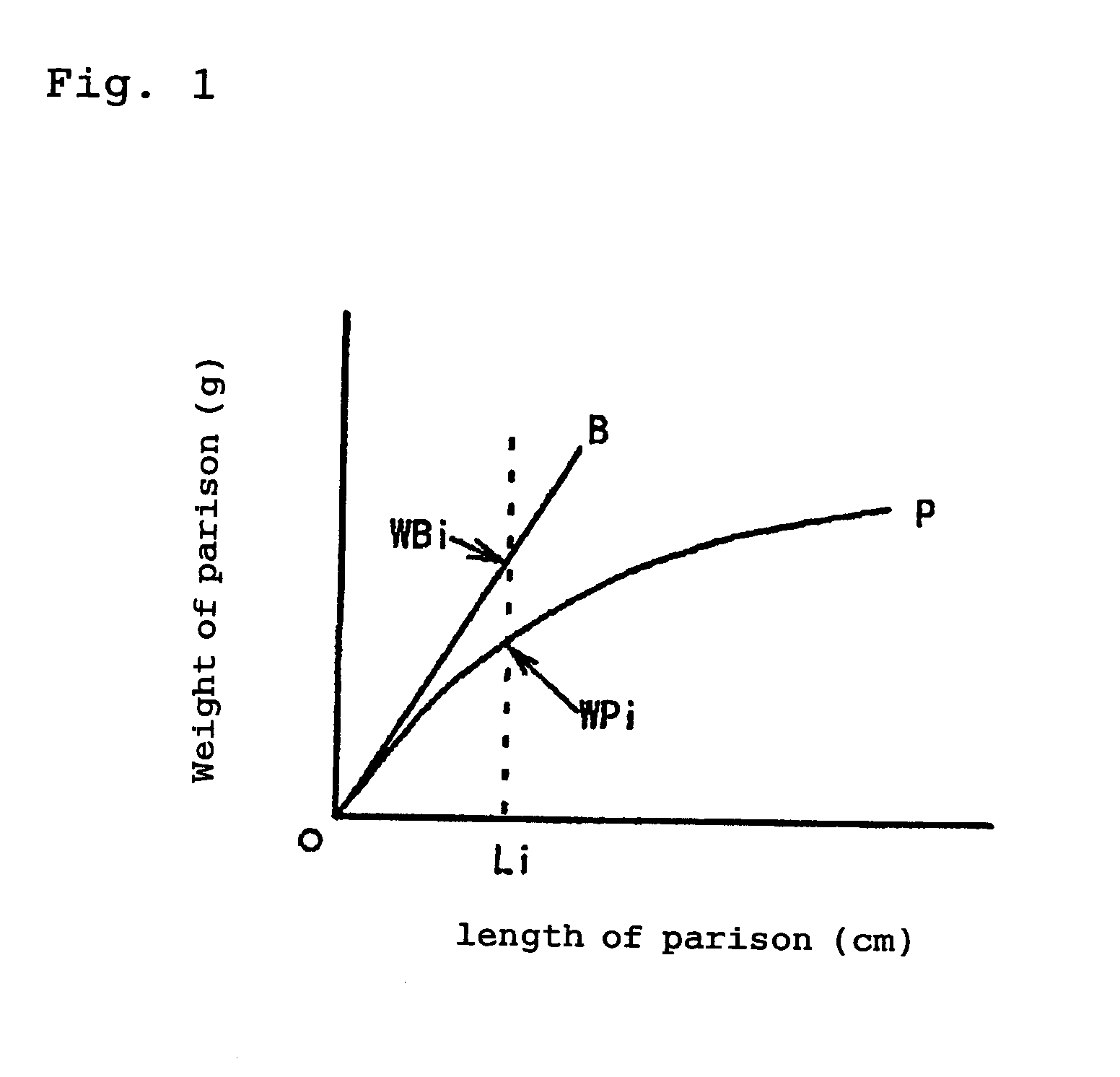Thermoplastic resin composition, molded article, and process for producing the same
a technology of thermoplastic resin and composition, which is applied in the direction of mica, pigmenting treatment, inorganic insulators, etc., can solve the problems of unsatisfactory heat stability, low practical use of polycarbonate resin compositions containing such a layered silicate, and inability to obtain hea
- Summary
- Abstract
- Description
- Claims
- Application Information
AI Technical Summary
Benefits of technology
Problems solved by technology
Method used
Image
Examples
examples 1 to 17
, and Comparative Examples 1 to 9
[0283] Components were dry blended together in ratios shown in Table 3 and Table 4, melt kneaded together by a vented twin-screw extruder (KTX30 of Kobe Steel, Ltd.) having a diameter of 30 mm, an L / D of 33.2 and screws in two kneading zones at a cylinder temperature of 280.degree. C., extruded and cut into strands to obtain pellets (to be referred to as "method 1" in Table 3 and Table 4). In some Examples, the components B and C were dry blended together in a ratio shown in the tables and pelletized in the same manner as described above (cylinder temperature of 230.degree. C.) except that the cylinder temperature was changed to 200.degree. C. in Examples 1 to 5 and to 230.degree. C. in Examples 9, 11, 13 and 14, and then the component A and other components were pelletized in the same manner as described above (to be referred to as "method 2" in Table 3 and Table 4). The cylinder temperature was 300.degree. C. in Example 15 alone.
[0284] As for the s...
example 18
Production of Polygon Mirror-1
[0309] The pellet of the above Example 7 was dried by a hot air circulating drier at 100.degree. C. for 5 hours. A regular hexagonal (diameter of center hole of 20 mm) polygon mirror inscribing in a 50 mm.times.50 mm square was molded by an injection compression molding machine having a clamping force of 35 tons. The arithmetic mean roughness Ra of the side surface (mirror surface) of the polygon mirror molded product was 0.006 .mu.m. A 80 nm-thick aluminum film was formed on the surface of the molded product by a DC magnetron sputtering device. The arithmetic mean roughness Ra of the side surface (mirror surface) of the molded product was 0.006 .mu.m.
example 19
Production of Polygon Mirror-2
[0310] A 50 nm-thick aluminum film was formed on the above a polygon mirror molded product obtained by molding the pellet of Example 7 by a DC magnetron sputtering device. The obtained molded product was electroplated to form a 10 .mu.m-thick Ni--P plating layer. The arithmetic mean roughness Ra of the side surface (mirror surface) of the molded product having a plating layer was 0.004 .mu.m.
PUM
| Property | Measurement | Unit |
|---|---|---|
| thickness | aaaaa | aaaaa |
| cation exchange capacity | aaaaa | aaaaa |
| wt % | aaaaa | aaaaa |
Abstract
Description
Claims
Application Information
 Login to View More
Login to View More - R&D
- Intellectual Property
- Life Sciences
- Materials
- Tech Scout
- Unparalleled Data Quality
- Higher Quality Content
- 60% Fewer Hallucinations
Browse by: Latest US Patents, China's latest patents, Technical Efficacy Thesaurus, Application Domain, Technology Topic, Popular Technical Reports.
© 2025 PatSnap. All rights reserved.Legal|Privacy policy|Modern Slavery Act Transparency Statement|Sitemap|About US| Contact US: help@patsnap.com


